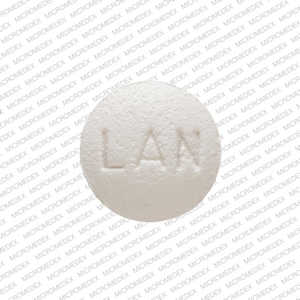Pilocarpine Disease Interactions
There are 9 disease interactions with pilocarpine.
- Bronchospasm
- Cardiac dysfunction
- GI/bladder neck obstruction
- Hyperthyroidism
- Parkinsonism
- Seizure disorders
- Glaucoma
- Cholelithiasis
- Nephrolithiasis
Cholinergic agonist (applies to pilocarpine) bronchospasm
Major Potential Hazard, High plausibility. Applicable conditions: Asthma
The use of cholinergic agonists is contraindicated in patients with uncontrolled reactive airway disease. Cholinergic agonists inhibits the hydrolysis of acetylcholine. The enhanced effect of acetylcholine produces constriction of the bronchi, increased bronchial secretions, and bronchospasm.
Cholinergic agonist (applies to pilocarpine) cardiac dysfunction
Major Potential Hazard, High plausibility. Applicable conditions: Ischemic Heart Disease, Hypertension, Hypotension, Heart Block
The use of cholinergic agonists, such as bethanechol and pilocarpine, is contraindicated in patients with pronounced bradycardia, hypotension/hypertension, coronary artery disease or conduction disorders.
Cholinergic agonist (applies to pilocarpine) GI/bladder neck obstruction
Major Potential Hazard, High plausibility. Applicable conditions: Peptic Ulcer, Gastrointestinal Obstruction, Colitis/Enteritis (Noninfectious), Urinary Tract Obstruction
The use of cholinergic agonists is contraindicated in patients with peptic ulcers, mechanical GI obstruction, acute GI inflammatory conditions, or urinary obstruction. Cholinergic activity may result in an increase in gastric acid secretion, GI motility, and gastric contractions. In patients with urinary retention, urinary reflux may occur if the sphincter fails to relax when the bladder is contracted by cholinergic stimulation. The reflux of urine from the bladder can cause infection in the kidneys and upper urinary tract if bacteriuria is present.
Cholinergic agonist (applies to pilocarpine) hyperthyroidism
Major Potential Hazard, High plausibility.
The use of cholinergic agents may be contraindicated in patients with hyperthyroidism. Atrial fibrillation has occurred in hyperthyroid patients administered a cholinergic agonist.
Cholinergic agonist (applies to pilocarpine) parkinsonism
Major Potential Hazard, High plausibility.
The use of cholinergic agonists may be contraindicated in patients with parkinsonism. Cholinergic agonists directly stimulates the parasympathetic nervous system inducing acetylcholinergic effects. Symptoms of Parkinson's disease may be exacerbated.
Cholinergic agonist (applies to pilocarpine) seizure disorders
Major Potential Hazard, High plausibility. Applicable conditions: Seizures
The use of cholinergic agonists may be contraindicated in patients with seizure disorders. Cholinomimetics have been associated with convulsions.
Pilocarpine (applies to pilocarpine) glaucoma
Major Potential Hazard, Moderate plausibility. Applicable conditions: Glaucoma (Narrow Angle), Uveitis (Anterior)
The use of pilocarpine is contraindicated in conditions where miosis is undesirable, such as acute iritis and in narrow-angle (angle closure) glaucoma.
Pilocarpine (applies to pilocarpine) cholelithiasis
Moderate Potential Hazard, Moderate plausibility. Applicable conditions: Biliary Obstruction
Pilocarpine should be administered with caution to patients with known or suspected cholelithiasis or biliary tract disease. Contractions of the gallbladder or biliary smooth muscle could precipitate complications including cholecystitis, cholangitis, and biliary obstruction.
Pilocarpine (applies to pilocarpine) nephrolithiasis
Moderate Potential Hazard, Moderate plausibility.
Pilocarpine may increase ureteral smooth muscle tone and could theoretically precipitate renal colic (or ureteral reflux), particularly in patients with nephrolithiasis. Caution is advised when used on these patients.
Switch to professional interaction data
Pilocarpine drug interactions
There are 86 drug interactions with pilocarpine.
Pilocarpine alcohol/food interactions
There is 1 alcohol/food interaction with pilocarpine.
More about pilocarpine
- pilocarpine consumer information
- Check interactions
- Compare alternatives
- Pricing & coupons
- Reviews (14)
- Drug images
- Side effects
- Dosage information
- During pregnancy
- Drug class: cholinergic agonists
- Breastfeeding
- En español
Related treatment guides
Drug Interaction Classification
| Highly clinically significant. Avoid combinations; the risk of the interaction outweighs the benefit. | |
| Moderately clinically significant. Usually avoid combinations; use it only under special circumstances. | |
| Minimally clinically significant. Minimize risk; assess risk and consider an alternative drug, take steps to circumvent the interaction risk and/or institute a monitoring plan. | |
| No interaction information available. |
Further information
Always consult your healthcare provider to ensure the information displayed on this page applies to your personal circumstances.


